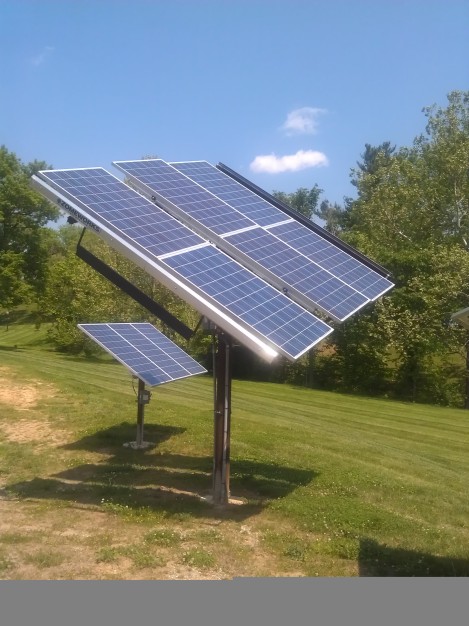 The modular units for Hickory Hall have begun arriving at Emory & Henry. They look pretty nondescript right now. They’re just modular building blocks sitting on trailers. The above picture is the foundation for Hickory, and if you look far off into the distance you can see the trailers lined up in front of the baseball field.
The modular units for Hickory Hall have begun arriving at Emory & Henry. They look pretty nondescript right now. They’re just modular building blocks sitting on trailers. The above picture is the foundation for Hickory, and if you look far off into the distance you can see the trailers lined up in front of the baseball field.
One thing you might notice in the picture below is the little sticker that says “Made in Ireland” in the bottom right corner of one of the panes.Why did we order windows from Ireland? Well, it turns out that to get a Passive House Certified window, you have to go across the pond. As you can imagine, these aren’t your average windows. They are triple glazed, filled with argon gas, and have a low-e coating. What does all that mean? Excellent insulation characteristics, of course, to meet rigorous Passive House standards.
Take a look at the window cross section below. This is from a double glazed, high-performance window:
Now, look at the cross section of this triple glazed Passive House style window:
 Notice a difference? The first window isn’t a bad window at all. In fact, it’s not even a standard builder’s grade window. It’s still got a low-e coating and inert gas. But the second window, well, it’s just plain impressive. It’s got an extra pane of glass in there, with an extra layer of inert gas for insulation. In addition, it’s fully thermally broken, meaning that the window and the frame won’t transfer much thermal energy from the outside or inside (called thermal bridging).
Notice a difference? The first window isn’t a bad window at all. In fact, it’s not even a standard builder’s grade window. It’s still got a low-e coating and inert gas. But the second window, well, it’s just plain impressive. It’s got an extra pane of glass in there, with an extra layer of inert gas for insulation. In addition, it’s fully thermally broken, meaning that the window and the frame won’t transfer much thermal energy from the outside or inside (called thermal bridging).
The result is astonishing. Preliminary modeling suggest that just changing the windows lowered our heating load by 20-25%. How is this possible? Well, a good double glazed window will have a u-value of about .3 (equal to an R-value of about 3.3). A triple pane window will be about half that, or .15 (equal to an R-value of about 6.6). So, it’s only twice as a efficient, right? Not quite. Take a look at this chart of u-value to performance:
Notice that it’s a nonlinear relationship going from a u-value of 1 to .5 gains a little, going from .3 to .15 gains a lot. It’s the same for walls. If you look at the chart again, you’ll see that you gain a lot more by going from u-value of .2 to .1 than from .3 to .2. These windows are also tilt-and-turn instead of double-hung, which means a much better seal and far less air leakage.
So that’s the story of our fancy Irish windows. Hopefully next time you look at a building, you’ll have a new appreciation for the windows and the role they play in a building’s energy performance.





